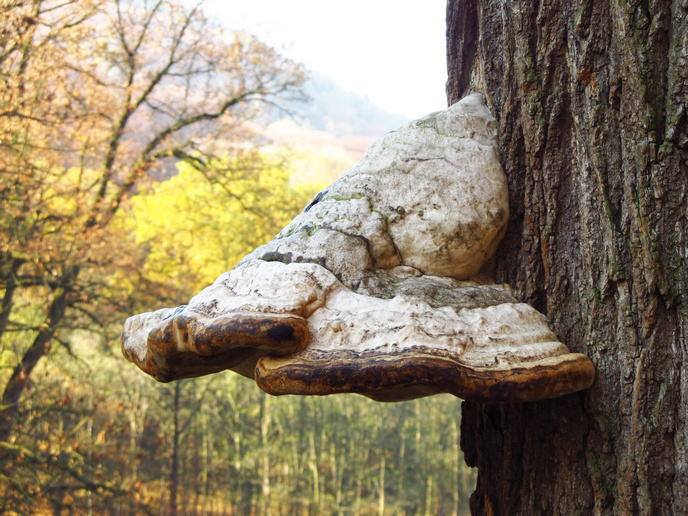
When we think of a strong, hard material, a fungus is not what usually comes to mind. Researchers supported in part by the EU-funded projects FUNGAR and iNEXT-Discovery have discovered some surprising properties in the fungus Fomes fomentarius that could result in a natural, biodegradable option to some plastics in the future. Their paper was published in the journal ‘Science Advances’. Commonly known as the tinder fungus, F. fomentarius grows on the side of various tree species, infecting them through broken bark and causing them to rot. As its name suggests, the fungus has traditionally been used as tinder for lighting fires, but it has also found use in the making of clothing and medicines. Now, based on its newly discovered properties, it could inspire the development of new ultralightweight high-performance materials.
The secret lies in the three layers
Fungi have a root-like structure called a mycelium consisting of a mass of branching, thread-like filaments called hyphae that spread through soil or rotting material. The research team found that in the tinder fungus, the root-like structure can be split into three distinct layers.
“Mycelium is the primary component in all layers,” the authors report in their paper. “However, in each layer, mycelium exhibits a very distinct microstructure with unique preferential orientation, aspect ratio, density, and branch length.”
Investigations into the three layers yielded the following information: a hard and rigid protective outer layer, or crust, and below it a foam-like, soft and leathery layer, followed by stacks of hollow tubular structures called H. tubes. As described in a news item posted on ‘ScienceAlert’, some parts of the tinder fungus “were as strong as plywood, pine, or leather … while also being more lightweight than those materials.” The crust, which made up only 4% of the fungus’s fruiting body (its spore-containing structure), was found to be the densest and least porous layer of the three.
The researchers also discovered that the less dense and more porous tubular layer, which makes up around 69% of the fruiting body, is able to resist greater forces than the foamy layer without undergoing major dislocations or deformations.
“What is found to be extraordinary is that, with minimal changes in their cell morphology and extracellular polymeric composition, they formulate diverse materials with distinct physiochemical performances that surpass most natural and man-made materials that are usually confronted by property trade-offs (e.g. increasing weight/density to increase strength/stiffness/toughness),” the authors write.
Aided by the FUNGAR (Fungal architectures) and iNEXT-Discovery (Infrastructure for transnational access and discovery in structural biology) projects, these results could serve as inspiration for the development of superior multifunctional materials for use in medicine and industry. “We believe that the findings should attract a broad materials science audience and beyond,” the authors note.
Source
CORDIS news, press release, 2023-03-10.
Supplier
Max-Planck-Institut für Kolloid- und Grenzflächenforschung
Technical Research Centre of Finland (VTT)
Utrecht University
Share
Renewable Carbon News – Daily Newsletter
Subscribe to our daily email newsletter – the world's leading newsletter on renewable materials and chemicals

















